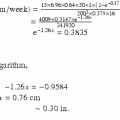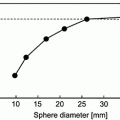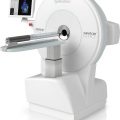(1)
Cleveland Clinic, Emeritus Staff, Cleveland, OH, USA
Keywords
FDA regulationsCompoundingPET radiopharmaceuticalsLegal requirementsFood and Drug Administration
Since 1975, the clinical use of all radiopharmaceuticals in humans has been regulated by the US Food and Drug Administration (FDA). The FDA regulates them in two major ways: for investigational purposes, submission of a Notice of Claimed Investigational Exemption for a New Drug (IND) by a sponsor (an individual or a commercial manufacturer) or submission of a New Drug Application (NDA) by a manufacturer for marketing. However, under special circumstances and specific conditions, Exploratory IND (eIND), Radioactive Drug Research Committee (RDRC) IND, and Expanded Access IND (eaIND) are permitted. Furthermore, physicians and technologists are required to have sufficient training and experience to practice in PET imaging. The FDA has provided specific contents for these training and experience.
In Chap. 8, we have described the methods of production of PET radiopharmaceuticals useful for clinical applications. For human use, these must be produced under strict environmental and procedural conditions and undergo a battery of quality control tests (e.g., stability, biological safety, efficacy, etc.), which are mandated by the FDA. The following is a brief description of different regulations for the synthesis of PET radiopharmaceuticals and their use in humans. Only the important points of regulations are presented.
Investigational New Drug
An IND for a PET radiopharmaceutical is approved by the FDA for human use following a submission by a sponsor of the preliminary data of the radiopharmaceutical in humans and animals, technical details of the project, the clinical protocol, and the credential of the sponsor. There are three phases in the IND clinical investigation of a radiopharmaceutical. In Phase I, only pharmacologic and biodistribution data of the radiopharmaceutical are obtained in a limited number of humans and no therapeutic and diagnostic evaluation can be made. In Phase II, clinical effectiveness of the radiopharmaceutical is evaluated for a specific disease only in a limited number of patients. In Phase III, a large number of patients involving many trial centers are included in the clinical trial to establish the safety and clinical effectiveness of the radiopharmaceutical for a specific disease. Annual reports must be submitted on the progress of the project. Any serious adverse reaction from the product must be reported immediately to the FDA.
New Drug Application
After a radiopharmaceutical is proven by clinical trials under an IND to be safe and efficacious for a specific clinical indication, an NDA is submitted with all clinical data by a commercial vendor to the FDA for approval to market it. Many clinical trial centers are sponsored by the vendor to collect the data, which are then submitted in the application. After scrutiny of the data, if the FDA is convinced of the safety and efficacy of the radiopharmaceutical for a clinical indication, it approves the product for marketing. It takes a long time (at times, a couple of years) from an IND to an NDA for approval of a particular radiopharmaceutical for clinical use in humans.
PET radiopharmaceuticals are uniquely different from conventional radiopharmaceuticals because they are short lived and are produced on site at the cyclotron facility. Synthesis of these tracers by radiolabeling with positron emitters is accomplished in automated synthesis boxes. Several lengthy quality control tests are often performed on an “after-the-fact” basis. The production methods and their technical details may vary from facility to facility. For these reasons, the FDA treats PET radiopharmaceuticals somewhat differently and attempts to standardize the techniques employed in all PET facilities. In the mid-1990s, the FDA published the regulations and guidelines for the manufacture of PET radiopharmaceuticals in the Federal Register. These regulations provided guidance for submission of NDAs and abbreviated NDAs (ANDAs) to the FDA for PET radiopharmaceuticals, and the guidelines gave details of the current good manufacturing practice (CGMP) to follow in the manufacture of PET radiopharmaceuticals.
However, the above regulations and guidelines were considered too costly and burdensome by the nuclear medicine community, particularly the commercial vendors. Also, other radiopharmaceuticals and conventional drugs were subjected to strict scrutiny by the FDA, resulting in a very long waiting time for marketing approval. Following strong lobbying by the nuclear medicine community, drug manufacturers, and other stakeholders, the US Congress enacted the FDA Modernization Act (FDAMA) (Public Law 105–115) in 1997 to overhaul several aspects of the drug manufacturing industry, which took effect on November 21, 1997. Under the Act, the existing regulations regarding PET radiopharmaceuticals were retracted and new provisions were introduced.
In the FDAMA, PET radiopharmaceuticals are categorized as positron-emitting drugs compounded by, or on the order of, a licensed practitioner following the state’s regulations and meeting the specifications of the official monographs of the US Pharmacopeia (USP). The FDAMA directed the FDA to develop approval procedures and guidance for the manufacture of PET radiopharmaceuticals within a time frame of 4 years. In this 4-year time line, all PET tracer-producing facilities in the USA were to be registered as drug manufacturers. In the first 2 years, the FDA was to consult with patient advocacy groups, professional associations, manufacturers, physicians, and scientists who prepare or use PET drugs, in developing approval procedures and CGMP for PET radiopharmaceuticals. The remaining 2 years were allowed for all PET radiopharmaceutical manufacturing facilities to comply with the new PET drug CGMP and register as manufacturers. During these 4 years, the FDAMA prohibited the FDA to require the submission of NDAs or ANDAs for PET radiopharmaceuticals produced according to the USP specifications. However, voluntary submissions of NDAs or ANDAs were not prohibited.
Based on the literature survey of PET data, the FDA concluded that certain PET radiopharmaceuticals, when produced under specific conditions, are safe and effective for certain clinical indications. Based on this survey, three PET radiopharmaceuticals, 18F-sodium fluoride for bone imaging, 18F-FDG for use in oncology and for assessment of myocardial viability, and 13N-NH3 for evaluation of myocardial blood flow, were approved by the FDA in 2000. 82Rb-rubidium chloride was approved by the FDA for evaluation of myocardial perfusion in 1989. Recently 18F-florbetapir has been approved for amyloid-plaque imaging in AD and 11C-choline for prostate cancer.
The FDA also published in the Federal Register a draft guidance for industry entitled, “PET Drug Applications—Content and Format for NDAs and ANDAs” (March 10, 2000; 65 Fed.Reg. 13010), citing the safety and effectiveness of 18F-FDG, 18F-soodium fluoride, and 13N-ammonia. It is intended to assist manufacturers of these radiopharmaceuticals in submitting ANDAs, instead of full NDAs, simply referring to this guidance for product information. Following a period of comments from various stakeholders, the final rule was adopted. The guidance gives the details on the criteria for when to apply for an NDA or an ANDA and what to include in the application. In addition, this 2000 Federal Register addressed user fees against the applicants of NDAs for the application, manufacturing facilities, and drug products.
Exploratory IND
A traditional Phase I IND requires a very comprehensive and detailed application for any human research protocol for evaluation of a drug. In 2006, the FDA has instituted a new approach, called the “Exploratory IND,” or “eIND,” to ease the application process as well as expedite the research progress. An eIND is a clinical trial that is conducted early in Phase I, involves a limited radiation exposure, and has no therapeutic or diagnostic intent.
It usually involves the use of a very limited dosage of the drug (microdosage) in research subjects for a limited time (e.g., 7 days). Through eIND, an investigator can assess (a) the mechanism of action, (b) the pharmacokinetics, and (c) the therapeutic potential of a drug from a group of candidates, and explore (d) the biodistribution using a variety of imaging techniques.
An eIND containing the following information must be submitted to the FDA:
(a)
A clinical development plan: It entails the rationale for the drug in question, a single-dosage or multiple-dosage study, and pharmacologic and/or pharmacodynamic end points.
(b)
Chemistry, manufacturing, and control: It includes a summary report for each drug on the following: physicochemical and biological properties of the drug, dosages to be administered, route of administration, grade and quality of all ingredients in the manufacture of the drug, and name and address of the manufacturer, if different from the sponsor; method of manufacture of the drug; composition of the drug; tests performed to ensure the identity, strength and quality, and purity and potency of the drug; stability of the drug; and results of sterility and pyrogen tests.
(c)
Pharmacology and toxicology information regarding the drug: This information can be obtained from animal studies using increasing dosages of the drug, but the needed information may be less than that required in a traditional IND.
(d)
Previous human experience with the investigational product, if any.
It should be noted that an eIND is meant for quick assessment of pharmacokinetics, pharmacological effects, and mechanism of action of a drug for its potential clinical use. For pharmacokinetics study, microdosages of the product are used not to induce any pharmacological effect. A microdosage is defined as less than 1/100th of the dosage calculated to yield a pharmacological effect of a test product with a maximum dosage of ≤100 μg. Microdosage studies performed in animals for pharmacokinetics are acceptable to the FDA for extrapolation to human studies. For pharmacological studies, toxicity of the test product is established in animals (e.g., rats) by repeated administration of the product over a 7-day period and observing the pathological changes in tissues. The study can be extended to a 2-week repeat study. The aim of the experiment is to establish the starting dosage and the maximum dosage of the test product for safety and efficacy in the clinical trial. The dosage and the dosing regimen determined in the animal experiments for pharmacokinetics and pharmacologic effects are extrapolated to the human clinical trial to establish the mechanism of action for a given target. The study must be withdrawn after the completion of the proposed protocol. Readers are referred to “Guidance for Industry, Investigators and Reviewers Exploratory IND Studies” at http://www.fda.gov/cder/guidance for further information.
Radioactive Drug Research Committee
In order to expedite research investigations of new radiopharmaceuticals, in 1975 the FDA allowed institutions to form the so-called Radioactive Drug Research Committee (RDRC) (21CFR 361.1), which functions like a mini-FDA. The committee is composed of at least five members—a nuclear physician, a radiochemist or radiopharmacist competent to formulate radioactive drugs, a person with experience in radiation safety and dosimetry, and at least two more individuals of other disciplines. Additional members of diverse disciplines are recommended in the committee. The RDRC is normally formed in medical institutions having sufficient experts, but a joint RDRC also can be established with more than one institution to achieve a high level of diversity and experience. The proposed committee membership with a designated chairman is submitted to the FDA, and upon satisfactory review the FDA approves it. The committee is primarily charged with the approving and monitoring of protocols involving the research use of radiopharmaceuticals to study the kinetics, distribution, localization, biochemistry, physiology, etc., in humans, but not for immediate therapeutic or diagnostic purpose nor to determine the safety and effectiveness of the drug as in a clinical trial.
The radiation dose to the critical organs (effective dose, dose to the lens and blood-forming organ) of a patient cannot exceed 3 rem (0.03 Sv) from a single dosage and a sum of greater than 5 rem (0.05 Sv) per year during the entire study. Only 30 patients over the age of 18 are allowed for study per protocol, and a special summary report must be submitted to the FDA, if the number exceeds 30 and the age is greater than 18. The pregnant women are not allowed to participate in the study under the RDRC.
An investigator in an institution formally submits a research protocol to its RDRC with detailed description of the study, but prior to submission, the protocol must be approved by the Institutional Review Board. The RDRC meets at least quarterly if active research is pursued, with at least 50% membership present. Members with conflict of interest in a protocol must excuse themselves from voting on the protocol. Based on the critical review of the protocol, the study may be or may not be approved by the RDRC. If approved, the study will be regularly monitored by the committee on the progress. Any adverse effects encountered during the study must be immediately reported to the FDA. The chairman of the RDRC is the primary contact person with the FDA and must submit an annual report on all projects. Also any change in the membership must be reported to and approved by the FDA.
Difference Between RDRC and Exploratory IND
The following major differences between the two processes are noted:
1.
The study under the RDRC is a basic research protocol investigating the pharmacokinetics, pharmacology, biodistribution, etc., of a radioactive drug in patients, whereas an eIND is a clinical protocol to study the safety and efficacy of a drug using small dosages with maximally tolerable pharmacologic effect.
2.
While an eIND protocol is approved and monitored directly by the FDA, the RDRC studies are approved and monitored by the committee itself in an institution and the FDA monitors it only indirectly.
3.
The number of subjects is normally limited to 30 in the RDRC, whereas there is no limit on the number of patients in an eIND, although it should be small.
4.
In the RDRC, if subjects of age less than 18 or more than 30 subjects are used, a special summary report must be submitted to the FDA. Also women of childbearing age must declare in writing the absence of pregnancy to participate in the RDRC study. Under an eIND, no such restriction exists except that each case is individually evaluated.
5.
The RDRC limits the radiation doses to subjects, whereas in an eIND there is no such limit.
Expanded Access IND for PET Radiopharmaceutical
Expanded Access IND (eaIND) has been designed by the FDA to provide access to investigational drugs on an emergency basis for serious or life-threatening diseases. Pursuant to the FDAMA, 1997, specific provision for the eaINDs was included in a final rule on CGMP published in 2009 (see below). Although eaIND drugs were meant for therapeutic drugs, the FDA has included the diagnostic PET radiopharmaceuticals in eaIND groups because of the short half-lives and difficulty in commercial production.
An eaIND can be applied for an individual patient, a small group of patients, or a large group of patients. eaINDs are most useful for individual patients and the submission of an application to the FDA is simplistic. The required information for application includes pharmacology data, previous experience, evidence from literature, etc. For an individual patient, only direct cost can be recovered, whereas for a larger group, both direct cost and indirect cost (e.g., administrative costs) can be charged to the patients. PET eaINDs do not pose any potential risk, because of the diagnostic nature of the ingredients. eaINDs are not applicable to FDA-approved drugs such as 18F-FDG and 13N-ammonia.
Compounding of PET Radiopharmaceuticals
The FDA has recognized for many years that compounding and dispensing of drugs for human use based on physician’s order falls under the regulations of medical and pharmacy practices in individual states in the USA. A noncommercially available drug, if ordered in a prescription by a physician, can be compounded by a pharmacist or some qualified individuals authorized and supervised by the physician using US Pharmacopeia (USP) guidelines under the regulations of practice of medicine and pharmacy. Because PET radiopharmaceuticals are short lived and produced daily in the cyclotron on the order of a prescription by a physician, their production for human use is considered compounding and falls under the USP guidelines. The physicians and pharmacists who compound (or oversee the compounding of) PET radiopharmaceuticals must be well trained and responsible for the strength, quality, and integrity of the product for compounding and dispensing.
Stay updated, free articles. Join our Telegram channel

Full access? Get Clinical Tree






